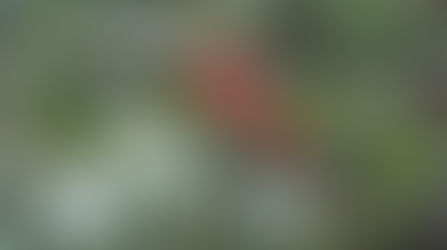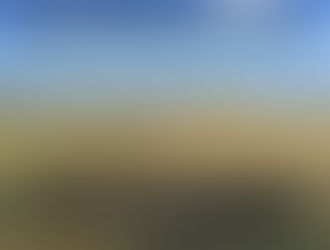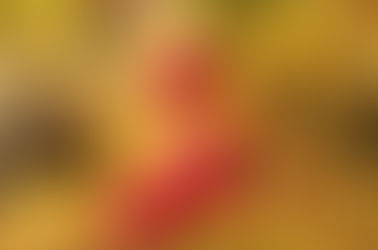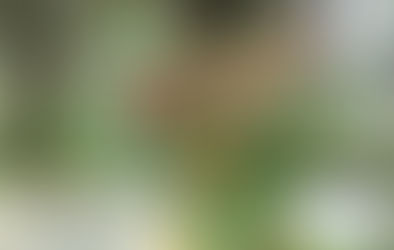Ethical Wildcrafting Guidelines
- Amanda Klenner
- Feb 7, 2016
- 13 min read

Being in nature and observing the way the land changes day by day, season by season, and year by year, is my life. I walk outside, on paths that have been walked many times over the years and observe the land. What is growing well? What is flourishing? What is struggling? What seeds are being sewn and what is lying fallow? As a bioregional herbalist, an herbalist who works primarily with the plants that grow locally to me, these natural cycles and rhythms have become a natural part of life for me.
Bioregional herbalists, who “wild craft” or “wild harvest” most of their medicine, work with the land helping to support and develop a relationship with the natural world around us. We watch and observe, and build relationships with the different communities of plants in the area. Being in Colorado, we are blessed with over eight different bioregions within three hours of my home, from tundra to desert and many different eco-systems in between, we have a wide array of plants that can be harvested. We have many protected Artemesia species here that seem to be abundant in this area, but the rocky mountain region is the only place where some of these beautiful sage brushes grow. As an herbalist harvesting in the wild, we need to know these things, build a relationship with the plant communities we work with, and learn good practices for harvesting, lest we destroy the land we depend on for medicine.
There are some rules I follow, and teach my students to follow, while wild crafting. It is a beautiful dance and a fantastic way to get to know the plants that surround us; unfortunately, some people chose to harvest unethically, endangering plant communities and whole plant species in the short-term name of making a few dollars. As herbalists we are stewards of the land, where our medicine and healing grows, and we need to support a healthy and diverse eco-system without striping the land of its beautiful medicine; an extremely short sighted and unethical approach.
Here are my personal wild crafting guidelines:
Always have permission to harvest. This goes for the property you are harvesting on, as well as asking the plant you are harvesting for permission. As for property, we need to have permission to harvest on anyone’s property that isn’t our own. If you live on property, you automatically have your own permission to harvest as needed. When you are out looking for plants in the wild, you have to consider whose property you are harvesting on. Harvesting on private property without permission can get you arrested, or shot. Harvesting on public land comes with its own local, municipal rules. Federal and state lands often come with harsh penalties for people harvesting without a permit, and local properties are often sprayed with pesticides. Ideally, you would be harvesting on your own personal property, private property you have permission to harvest from, or a permit for specific plants on public land.
Quick tip: Make friends with your local organic farmer. There are many medicinal “weeds” that they would be glad to have you come out and harvest. This clears their land of “weeds” and gives you a great source for organic herbs. Some plants I get regularly from my organic farmer are yellow dock, burdock, dandelion, yarrow, chickweed, chicory, mullein, grindelia, golden rod… you get the idea.
Not only is it important to have permission from the property owners, but also it is important to have permission from the plants, or from “spirit” or “God” or “goddess” in whatever form that takes for you. The plants are teachers; they have survived much longer than us humans, and have much to teach. They often like being medicine and helping us humans along the way, but sometimes they don’t want to be harvested. I always teach mindful harvesting, when we approach a stand, take a look at it and see if it is a good sized stand that can support the eco-system around it with abundance to share, then stop, take a deep breath, close your eyes and listen. Does this stand feel like it accepts the idea of being used as medicine? Do you feel anxiety, repulsed or pushed elsewhere, or feel like for whatever reason this isn’t the right time, place, or stand to harvest? Time and again I teach people to stop and listen. Often they get a feeling of “yes go ahead” or “not right now” or “heck no go away”. Listen to those feelings, as they are communicating something very real and important, and intuitive acceptance or refusal to be used right now. As much as our higher functions might disagree, we need to listen to the divine guidance we are given.
Do not harvest near roads, or in polluted areas. The herbalist rule of thumb is: avoid harvesting on roadsides or near trails where people frequently pass by to avoid pollution from cars, garbage, animal or human wastes on the side of the path. I have a 20-yard rule, do not harvest within 20 yards of these areas. That distance increases if the plants I want are downhill from a road or other polluted area. Every herbalist has his or her own preference of distance, but I fall pretty firmly in the “better safe than sorry” category. Other potential polluted areas are around railroad tracks, heavily sprayed areas, anything down stream from a mine, anywhere recently affected by oil spills, places where people party and leave used drug needles around, etc. In Colorado the landscape is dotted with old coal and gold mines, which have some pretty toxic run-off. When I approach a new area I usually do some research to find where the local mines are, and avoid harvesting on land down hill of the mine entrance.
Before harvesting, observe the land. I prefer to watch the land I am harvesting from, and have permission to work with, for a full cycle of a year before harvesting (unless I am on a farm to help them “weed”). This is important so that we can determine if a stand is growing or shrinking, if animals are using these plants for food, and if there will be enough food for the animals that use these plants as food, as well as medicine for us humans. Here in Colorado, we are seeing wild bears and elk come into suburban and urban areas looking for food because we had a rough start to spring, and many of the flowers on the fruiting plants died because of late snows and freezes. Because of this, this year I haven’t harvested much bearberry, choke cherry, hawthorn berry or other fruit the fluffy friends rely on through the rough fall and winter ahead. By observing we can determine the health of the land, build a relationship with these spots, and determine if it is safe for the eco-system to harvest.
Know your plant ID. Every herbalist should be properly trained in how to use a field guide, and a botanical key, to properly identify the plants we are harvesting. Never, ever, harvest or eat a plant you aren’t 100% sure about the plant ID. There are tens of thousands of medicinal and edible plants around the world, and many that, although not generally used, aren’t poisonous, but there are some that are extremely toxic or deadly if an ID mistake is made. Water hemlock, for example, is extremely poisonous in small doses, and can be easily mistaken for Queen Anne’s Lace by a beginner. Ideally, it is best to find someone locally who knows the plants and can take you out to learn about plant ID in person so you can learn your local plants, both medicinal, edible, and toxic. It is more important to know what can harm you than what can help you in the first days of wild harvesting.
Know your endangered and threatened plant species. There are many popular medicinal plants that are over harvested and either endangered, threatened or over harvested. Knowing these plants can help guide you on what plants not to harvest medicinally, but to collect seeds of and expand populations, growing them on your own property if you can, or spreading them throughout their native environments. The United Plant Savers is an amazing organization that has a great “at risk” and “to watch” list of medicinal plants that are either over harvested or losing land where they are able to grow due to climate change or human involvement. You can find the list at http://www.unitedplantsavers.org/species-at-risk
Have the right tools. You have now obtained permission to harvest from the property owner and have observed the area for a full cycle of the year. You know there is an abundance of a few good plants here and you would like to harvest. Be sure you have the right tools for the job, being sure to make the least harmful impact on the individual plant, the patch of plants (because we only harvest from abundance), and the eco-system. Some good tools to have in the wild crafting kit can be found in an additional list further down the page.
Harvest abundance, leave scarcity. When we observe the plants and their growth patterns, and the animals in the eco-system, we can tell if there is an abundance of any particular plant. We watch the stand and see if it is growing or shrinking. We observe the plant and see if there are brown spots on the leaves, indicating stress, or if the plants are happy and healthy. We observe the land around to see that this isn’t the only patch of said herb, being sure this can continue to spread, and we know harvesting this plant won’t permanently negatively impact the population in the area. At this point we can harvest our plant mindfully, leaving the stand as beautiful as we found it. We often hear herbalists quote the “30% rule” – where we can harvest 30% of the plant population without negatively affecting it. I keep closer to a 5% rule personally. 30% of a plant population harvest is a significant amount of plant material. This will visually impact the appeal of the land, and if we are harvesting from a large patch, could be too much for one herbalist to process and use in a year. I make it a personal rule to leave the land as beautiful, or more beautiful, than I found it. Never have I felt a 30% wild harvest to be what I need or the plants want. Respect the land, the patch, and maintain the beauty of the scenery.
First harvest the abundant weedy plants. There are many plants that are abundant, some becoming weedy and invasive in any given area. These are often the best, most needed medicines by people in this region, they are abundant and you don’t have to worry about overharvesting them. It is easy enough to go online and search “(your geographical region) invasive species” and see what medicinal “weeds” pop up. You will find things like dandelion, mullein, plantain, cleavers, and cottonwood are weedy, invasive, and people are actively trying to reduce the populations of these fantastic plant allies. These are often the best medicines and widely available.
Rescue plants that are going to be destroyed anyway. If you see they are putting in a mall in that field over there where the wild things grow, ask permission to harvest and rescue the plants that you can, maybe bringing a pot or five to rescue these plants for propagation elsewhere. These would just end up in a dump anyway, so you are doing the property owner a favor by removing the plants, getting some free medicine, and perhaps even rescuing some at risk plants while you are at it. This is how I get access to plants like ocotillo that is protected in Arizona, but often destroyed for new construction.
Only harvest what you can use and process that day. It is easy to go out and harvest ALL OF THE MULLEIN (or other weedy herb) because it is an invasive species and people actively want it removed from their property, but only harvest what you can process and preserve in two days. The thing is, it is easy to dig up some plants and put them in the back of the truck, but it is much harder to then strip the leaves, clean and make medicine with 300lbs of plant matter, which quickly loses its potency after harvest. Be sure to have the time to make medicine with or otherwise process whatever you harvest.
Be ok with an empty basket. This may feel like it goes against societies teachings, but realize that you have absolutely no requirement to leave your hike with a basket of plants. If you are out, and for whatever reason find it isn’t right to harvest right now, know that is ok. Know that if you leave those elderberries for the birds and bears, they are being used to keep them alive through the harsh winter. Know that recognizing that that patch of plants isn’t happy, and not harvesting is a sign of respect for the land, and makes you a part of the ebb and flow, not a separate entity that takes what they want without considering the needs of the forest, the plants, the animals, and other things that may rely on these plants for their life. Be content not to harvest anything and just to enjoy the time in nature.
Encourage abundance. Many of our medical plants are fruits, seeds, and roots. By taking a fruit we are potentially reducing the population of the plant, although fruits and seed harvesting don’t harm the plant being harvested from. If you are harvesting fruit or seeds from non-abundant plants, be sure to plant a few to encourage the population to grow. When I find at risk plants like Solomon’s seal, I harvest seeds to grow in my own garden, or on a property that I am a steward of. This can help encourage abundance in the plants, ensuring medicine for you, and the continuation of the species. When we harvest the roots, we effectively end the life of this plant. When harvesting be sure to leave a bit of root in the ground so a little piece of the plant can re-grow, and continue the life cycle. For plants that are very sensitive and at risk, I will also plant an additional root piece (usually harvesting the whole root, cutting the top ¼ off with the leaves still attached, and re-planting this) to save the plant, and then leaving a bit of the root in the ground, doubling the population of whatever I harvested. By managing stands this way, I am able to maintain or slowly grow the patch, and encourage its health and vitality for generations to come.
Leave the strongest lushest plants in a stand. These power house plants are strong, and their offspring will be strong and good medicine as well. Let them go and reproduce in peace.
If there is trash in the area, harvest that too. We are the stewards of the land, and as such we have a responsibility to leave the land as beautiful, or more beautiful than before. IF you find garbage lying around, pick it up in a separate bag. The land will thank you.
Give thanks. Every harvest is a transaction between you and the natural world. Give thanks to the plants, to the land, and to “spirit” for the gifts of healing and abundance you have been given. I usually carry rose petals around with me and leave them as a thanks to the plants and the land. Some leave a strand of hair, a prayer, an offering, anything that acknowledges what you were given, and your thanks.
With this checklist, a few good tools, and ideally a local guide for the first few trips, you are ready to go out and harvest your own wild medicine. Some tools I suggest everyone have on hand for harvesting are:
Field guides. Plant ID is so important, and I can’t tell you how often I have been asked “What is that plant?”. Well, my students know the answer is “look in the books”. A good field guide for your local bio-region is the most important thing you can have when out in the field. If you plan on harvesting while you are out, be sure you have 3 guides on you so you can be very sure of your plant ID before harvesting. It is best to have guides that have botanical drawings of all of the life stages (ideally), pictures, and a good botanical description. If you are new to botany, I also suggest the book Botany in a Day.
Pruners. Pruners are the most commonly used wild harvesting tool as they can easily cut off a bit of the plant with little effort to you, the harvester, and to the plant. Keep them sharp and these tools will last for years. A holster for your pruners is always nice so you don’t drop or lose them too easily.
Hori-hori. A hori-hori is a Japanese gardening knife, which has a sharp point to dig deep into the soil, making it easy to harvest roots. It has a serrated edge on one end making it easy to cut stems and stalks, and is easy to carry. Hori-hori’s don’t bend like trowels when you are digging in hard clay soil, and I can’t speak highly enough of this fantastic tool. Thank goodness for 7Song for demonstrating this to us at a conference a few years ago, I owe him a whole lot for introducing me to this little contraption.
Digging fork. A digging fork is great to have on hand for harvesting roots. It doesn’t bend as easily as a shovel, and does much less damage to the plants than a normal shovel does. I use my digging fork to harvest burdock, yellow dock, dandelion and propagated echinacea roots. This isn’t something I take on my daily hikes, I only bring it with if I am going out with the intention of harvesting a large quantity of roots.
Loppers. These are needed for chopping off thinner branches of trees, often used when harvesting new growth of willow, juniper, pine, or wild cherry.
Handsaw. A folding handsaw is nice to have on hand if you are harvesting larger branches. Last winter I came across a naturally downed pine tree that couldn’t have fallen more than a few days previously. Pine is such beautiful medicine that I wanted to take and use as much as I could so we sawed off the branches and hauled them away to the van to be processed and used for medicine. Without the hand saw we would have had to process everything in the field, and we didn’t bring enough bags for that.
Drawing knife. If you plan to harvest bark, a drawing knife makes the job so easy.
Bags or baskets. You will need containers to put your herbs in. I prefer to take several bags so each plant can have its own place. I prefer cloth bags that breathe, or paper bags so that the herbs won’t mold when they are transported back to the workshop or house to be processed. Cloth shopping bags, back packs, or burlap sacks are all fantastic for this. Don’t forget the beauty and simplicity of a harvesting basket if you just plan to go out and harvest a few things.
Medicine making tools. Do you plan on harvesting and medicine making in the field? If so be sure you bring everything you need! Jars, alcohol (or other menstruums), sharpies to mark your jars, boxes for the jars so they don’t break, knives, cutting boards, scales, etc.
Hiking gear. Be sure to have a backpack to carry the tools you need, water, a sun hat, appropriate hiking clothes that cover the skin to avoid sunburn, food, good protective boots, and a first aid kit – just in case.
Hopefully, with these basic guidelines, you will have the tools you need to go out and learn what is growing in your own back yard, and have the guidelines you need to turn these common weeds into beautiful medicine.






















Comments